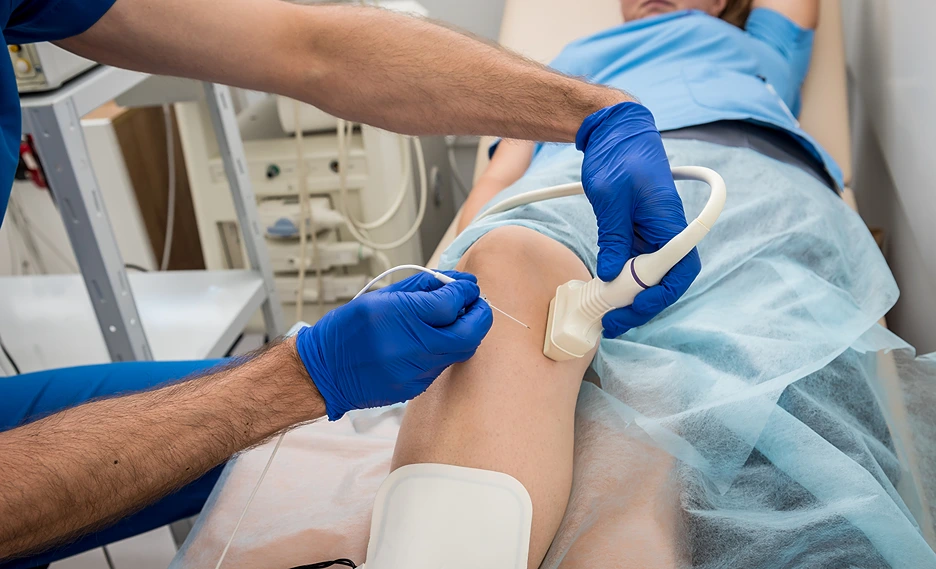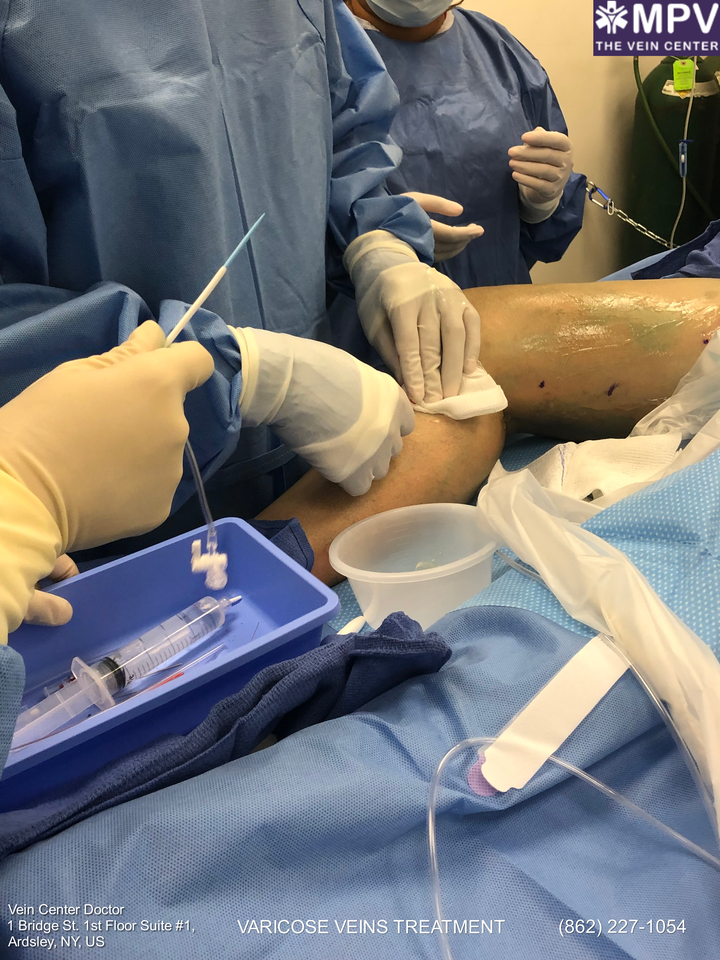Chronic venous insufficiency (CVI) is a common vascular condition that causes the outgrowth of visible varicose veins on the legs. It usually isn’t life-threatening, but the varicose veins can have an unsightly appearance with occasional pain and discomfort. Fortunately, medical treatments for CVI have been around for a while and one of the popular procedures for safe and effective vein removal is radiofrequency ablation therapy.
So when was radiofrequency vein ablation cleared by FDA for treating varicose veins? The FDA approved radiofrequency ablation as a minimally invasive technique for treating chronic venous insufficiency in 1999. The procedure involves delivering heat produced by radio waves to treat the superficial veins: the greater saphenous vein and the lesser saphenous vein. This treatment is said to have about a 90% to 98% success rate with fewer complications than vein surgery.
Living with unwanted veins is a thing of the past, when you can simply schedule a free consultation with Vein Center Doctor and find your ideal solution today.
Varicose veins can be seen in about 3 in 10 adults, with women more likely to be affected than men. This vein disease often appears enlarged, bulging, or twisted with a distinctly blue or purple color. It’s primarily caused by venous reflux where the vein valves aren’t functioning properly, causing the backward flow of blood until it pools inside the leg veins.
When left untreated, having venous reflux disease won’t only result in the appearance of superficial varicose veins but also lead to painful and disabling symptoms. Most people who suffer from chronic venous insufficiency or venous reflux experience a reduced quality of life and a decrease in productivity.
Thankfully, there are now several procedures that can effectively treat CVI and varicose veins. Initially, surgical treatment with vein ligation and stripping has been the standard choice of treatment for varicose vein removal. But as medical technologies become more advanced, doctors have come up with newer and least invasive techniques such as radiofrequency ablation.
The US Food and Drug Administration cleared endovenous radiofrequency ablation for vein treatment in 1999. With this approval, healthcare providers and vein doctors have been able to provide a minimally invasive treatment experience to people with chronic venous insufficiency and varicose veins.
Over the years, the devices used for radiofrequency vein ablation have also evolved. Here’s a look at the changes in radiofrequency equipment:
Radiofrequency endovenous ablation has been growing in popularity as one of the top procedures for vein removal. Here are some of the reasons why radiofrequency treatment is an excellent choice for varicose veins:
If you’re intimidated by having large incisions on your skin, you wouldn’t have to worry about them with radiofrequency ablation. During the procedure, the provider will create only one small incision that will serve as the insertion site for the catheter. They’re usually guided by ultrasound so they have a live view as they look for the diseased vein.
The tip of the catheter delivers the RF energy to heat the vein walls, causing them to collapse and form scar tissue. The tissue closes the damaged vein and forces blood flow to reroute to nearby healthy veins. The procedure can take anywhere from 15 minutes to 2 hours to finish, depending on the size and number of treatment sites.
Another great thing about radiofrequency endovenous ablation is that patients don’t have to be under general anesthesia. In general anesthesia, your whole body is put in a state of unconsciousness. This is typically used in invasive surgical procedures so you won’t feel pain and discomfort.
Radiofrequency ablation treatments only require local or tumescent anesthesia. The provider will mix and dilute lidocaine with saline solution and this will be injected along the path of the diseased vein. The application of local anesthesia is generally safer and has fewer risks. You can also recover and gain your reflexes much faster with local anesthesia compared to general.
Varicose vein stripping and ligation is a surgical procedure intended to tie the abnormal vein to stop the flow of blood. The treated vein is then stripped or removed by pulling them out of the leg. Although this procedure has been the standard of care for varicose veins for a long time, it has been associated with some risks and complications such as blood clots, infection, bleeding, and deep vein thrombosis.
Fortunately, radiofrequency endovenous ablation treatments are low-risk and they’re safer than vein surgery. They also have lesser post-procedure side effects and most of them aren’t as serious and can be easily managed. Some of the possible side effects of radiofrequency vein treatment are pain, numbness, and a burning or tingling sensation.
Radiofrequency ablation procedures are usually outpatient and the recovery period isn’t as long as in surgical treatments. You can go home immediately after the session but you’ll be advised to keep a close eye on your treated leg.
Before you leave the vein clinic, the provider will wrap the treated leg with an elastic bandage or compression stockings which you’ll have to wear for several days or weeks. The compression stocking or wrap will help apply constant pressure to the veins and alleviate swelling and discomfort throughout the recovery. You’ll also be able to walk and move comfortably but you’ll be advised to limit doing any physical activity or exercise as the treated area heals.

Radiofrequency vein ablation is highly successful and effective provided that you receive the procedure from an experienced provider. According to one study, the treatment outcome of radiofrequency ablation provided a high success rate of 97.7% with significantly improved clinical severity of visible varicose veins. The results were maintained for up to a year after the procedure.
In another clinical trial, the vein removal procedure provided a technical success rate of 97.9% with minimal post-treatment complications. The participants in the said study also showed favorable improvements in the complete healing of their venous ulcers.
The treatment also has a high satisfaction rating as seen in one study which reported that about 95% of treated patients would recommend the procedure to a family or friend. In this same report, it was also discovered that the treatment can provide lower rates of varicose vein recurrence after undergoing the procedure.
Another group of researchers measured the results of radiofrequency ablation and met a success rate of 99%. They also reported lower complication rates and better patient satisfaction ratings compared to other techniques of vein removal.
The radiofrequency ablation procedure is best suited for patients with chronic venous insufficiency, large varicose veins, or incompetent perforator veins. Before you go for the treatment, you should have a consultation with your provider to discuss your condition and expectations about the procedure.
There’s minimal preparation involved prior to the procedure. Normally, you’ll be asked to stop taking NSAIDs or blood-thinning medications before the treatment. You should also wear loose, comfortable clothing and bring your compression stockings.
For the procedure proper, the provider will first mark the areas that’ll be treated. The treatment sites will then be cleansed and they’ll create an incision site where the radiofrequency catheter and ultrasound guidance are placed. Before applying RF energy, the local anesthetic will be injected into the area of the diseased vein.
Afterward, the tip of the catheter will release radiofrequency energy to damage the walls of the vein and cause the shrinking of the varicose veins. You can expect to feel slight discomfort as the heat passes on from the catheter to the veins. Once each vein is treated, the catheter will be withdrawn and bandages will be applied on the skin to protect the skin.
Aside from radiofrequency ablation, there are other possible treatment options for eliminating varicose veins. The choice of treatment will likely depend on the severity of your venous condition and its symptoms. Here’s an overview of how RF treatment differs from other vein removal procedures:
| How it works | Best used for | |
| Radiofrequency endovenous ablation | Uses radiofrequency energy to heat the walls of the affected vein and close off access from blood circulation | Large varicose veins and incompetent perforator veins |
| Endovenous laser ablation | Also known as laser ablation, it follows the same principle as radiofrequency treatment but uses laser energy to induce heat and shut off the damaged vein | Large varicose veins and incompetent superficial veins |
| Sclerotherapy | Ultrasound guided sclerotherapy or foam therapy involves injections of a chemical agent that irritates vein walls and causes them to close, rerouting the blood circulation to another healthy vein | Small varicose veins and spider veins |
| VenaSeal | The VenaSeal closure system is a medical adhesive that’s placed in the diseased veins with a catheter and ultrasound guidance. The glue is intended to close the vein and block blood flow. | Superficial varicose veins and spider veins |

With the FDA approval of radiofrequency ablation in 1999, it’s become much easier and safer for patients with varicose veins and chronic venous insufficiency to get lasting relief from their symptoms and reclaim their quality of life.
Vein Center Doctor is a trusted provider of state-of-the-art treatments for varicose veins and other kinds of venous diseases. We have highly-skilled and competent aesthetic professionals to provide you with safe and successful vein removal procedures. Call us today to book an appointment or inquire about our other services.
Find exactly what you need to get rid of your vein-related problems. Dr. Sood and the rest of our team at Vein Center Doctor are ready to help: schedule your free consultation today.
Most Insurance is accepted for treatment